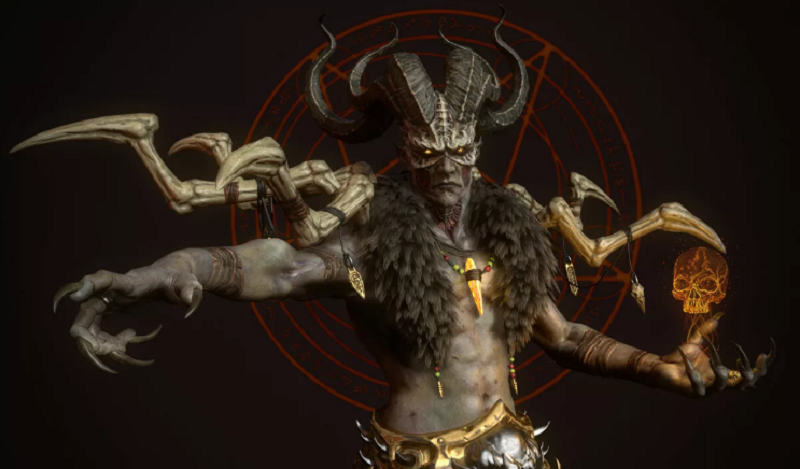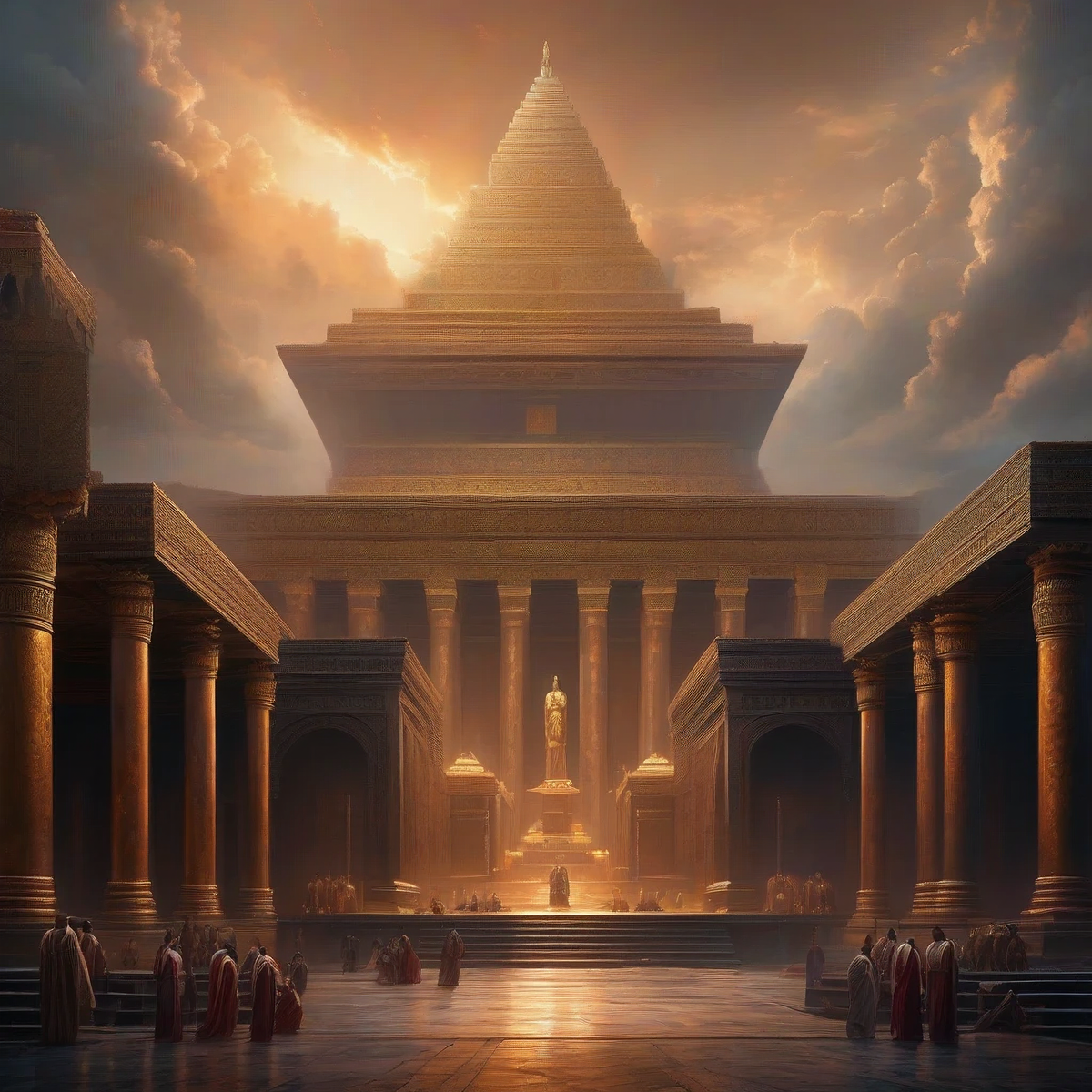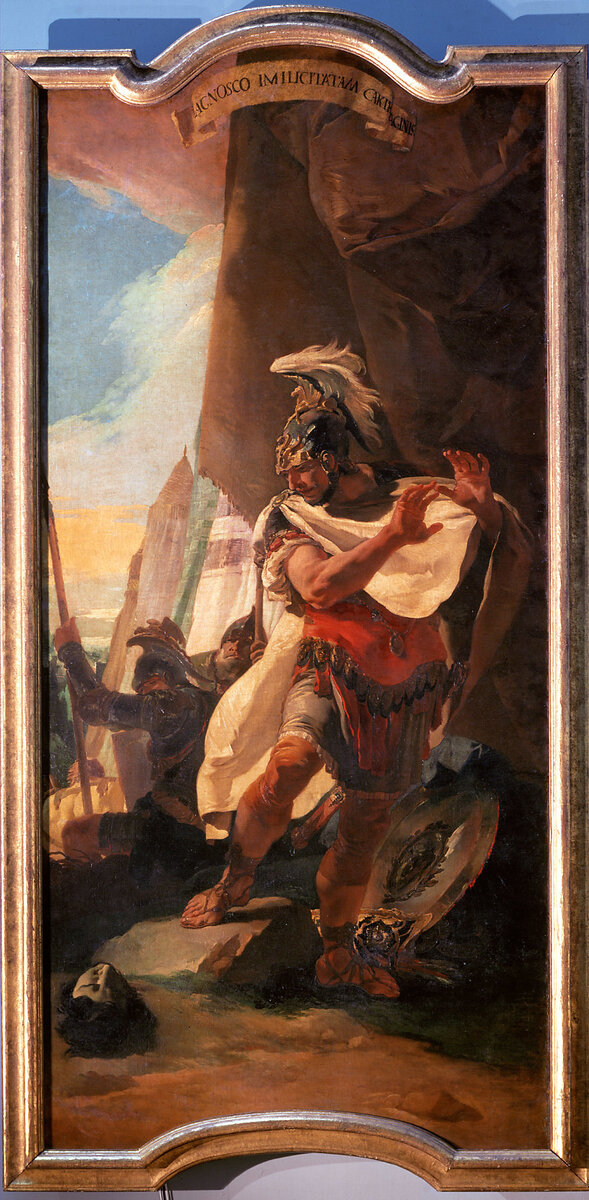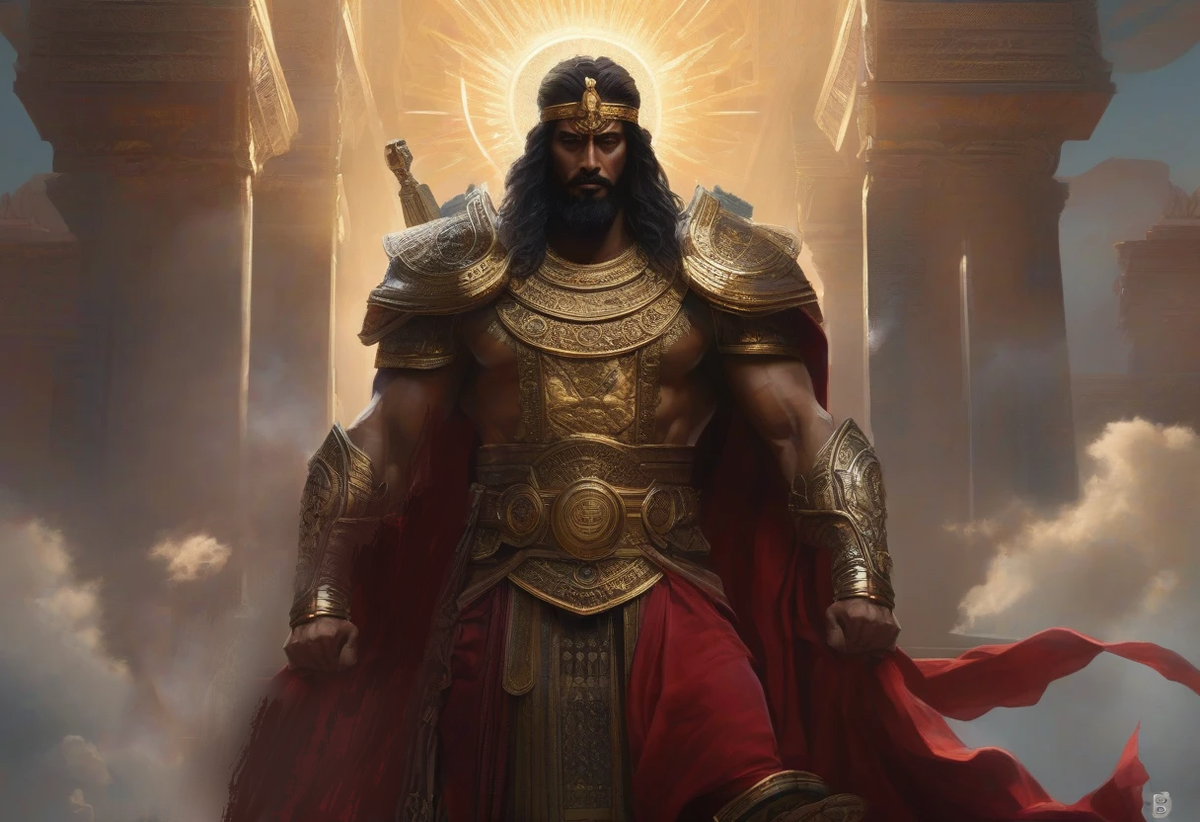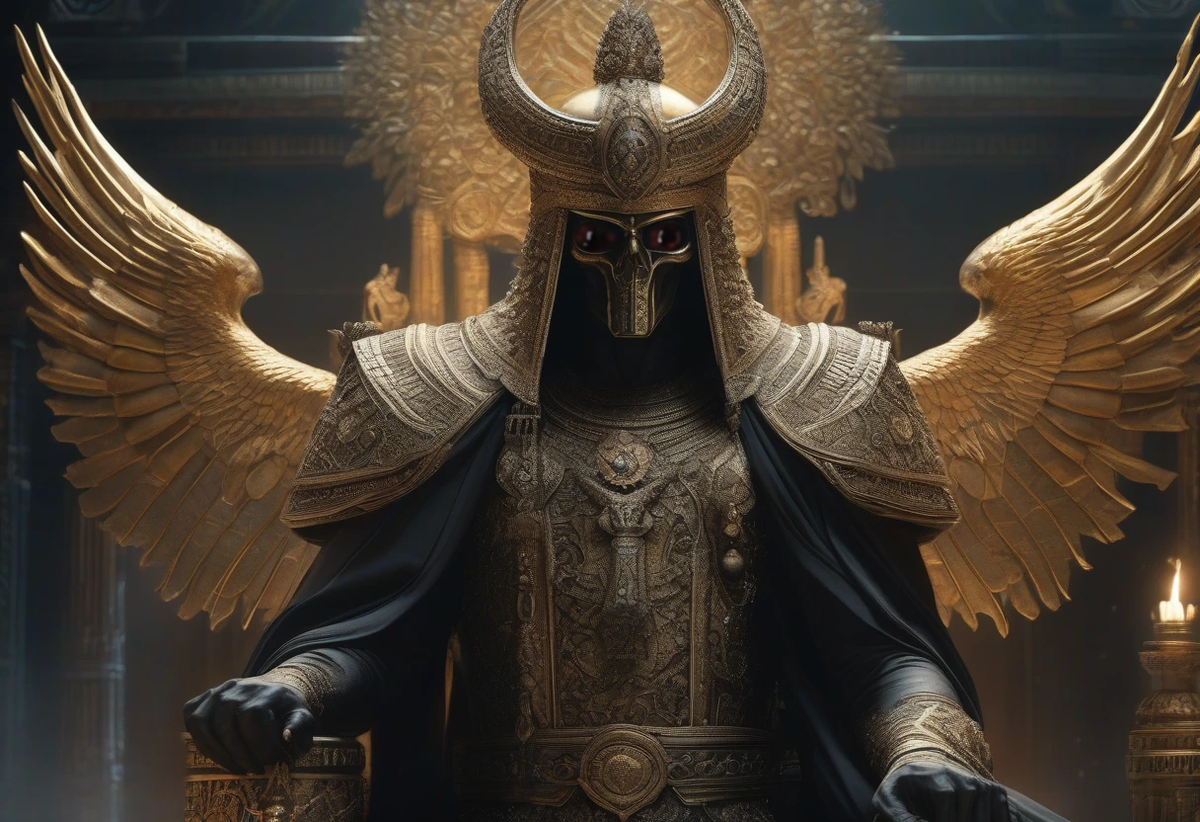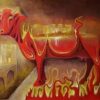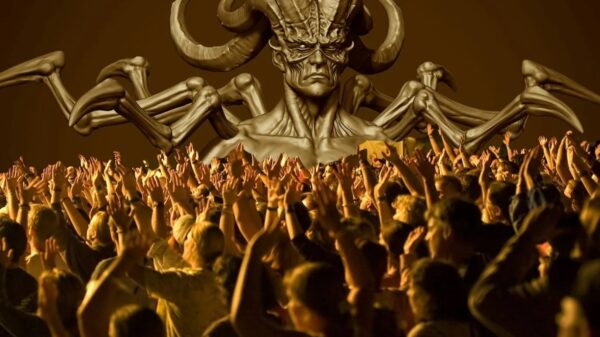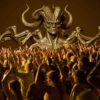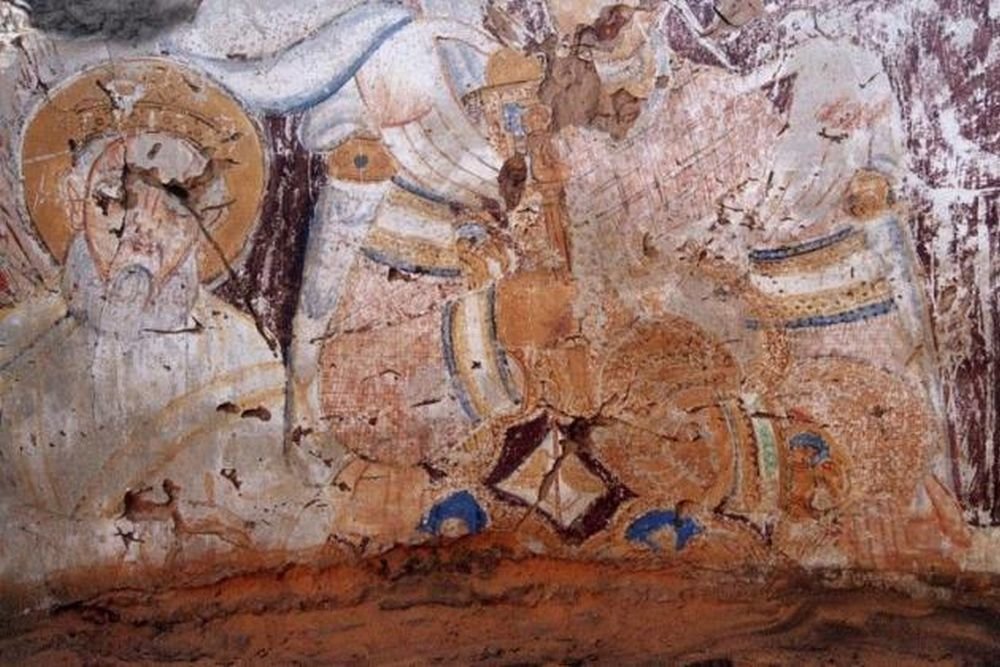The warriors standing in front of the sanctuary knelt down: “Give us victory, O mighty god! And if necessary, we will pay with our lives for your gift!” Blood from the priest’s cup spilled onto the sacrificial stone.
It was rumored that real human blood was used as a “drink” for the great Baal. But what did such a small sacrifice mean in comparison with what the almighty Thunderer could give? People revered Baal for a reason. But what kind of god was this? And why did the initially revered patron turn into a demon and the head of demons
“Owner” of the earth
Among the Assyrians and Babylonians, one of the main deities of their pantheon was considered the cruel and harsh Baal, the powerful patron of peoples. He was considered a strong god, but was not at all distinguished by a peaceful disposition.
On the contrary, Baal was often identified with storms, thunderstorms, and the elements of war. The warriors of antiquity revered him, believing that it was this god who decided the outcome of the battle, giving victory to the one who was most worthy of it.
In the Semitic languages of ancient peoples, the name of the deity sounds like “Bel”, which means “lord”. And Baal really was the ruler of the whole earth – this is how legends describe him. Interestingly, quite peaceful activities were not alien to him.
This god was worshiped by farmers who believed that Baal was able to endow the earth with life-giving power and subsequently give people a harvest. In short, he was a “universal” god, worshiped by many tribes. But what was the origin of such a complex and multifaceted deity?
Patron and protector
Oddly enough, at first the word “baal” was a common noun. Many centuries (and even millennia) ago, this was the name given to a certain patron of a certain place, city, sanctuary, or piece of land. It is known that Lebanese and Phoenician cities had their own baals.
The meaning of the combined concepts of protector and founder was put into this word itself. Often the glorious ancestors of the people who stood at the origins of the appearance of the tribe were called baals. Gradual deification turned the Baals into some higher beings, patron spirits, and then gods.
Soon, sanctuaries began to be built for the Baals – the people needed certain places where they could observe rituals and turn to God.
By the way, a remarkable feature is the presence of the name of the deity in the names of famous personalities or names of localities. For example, the famous commander Hannibal knew very well that his name translated as “favorite of Baal.”
In fact, such names were a kind of amulet that protected a person. They were considered especially necessary for warriors or rulers, whose lives were always in danger.
And here, as you noticed, we are no longer dealing with Baal the warrior, not with Baal the farmer, but with the pagan version of the “guardian angel”. However, Baal was clearly far from being an angelic essence, as it is understood in Christianity. When did this ‘god’ begin to change his appearance?
Different forms of Baal
The cult of Baal quickly spread throughout Phenicia, Canaan, Syria and surrounding regions. Many peoples considered him the most powerful supreme deity of their pantheon. At the same time, Baal invariably acquired the features and characteristics of the area where he was worshiped.
For example, in Ugarit they called him Balu, which translates as “bull.” God’s beloved was Anat, and he himself embodied the powers of fertility, courage and indomitable energy.
In Phoenicia they told legends about Baal-Tzaphon, who lived on a high mountain. The powerful and mysterious god was the patron of sages and the keeper of secret knowledge. He was also distinguished by his strength, and often helped warriors become not only more skillful in battle, but also more cunning.
Some Phoenician legends describe Baal as the lord of sea deities and flowing waters. His wife was called the beautiful goddess Astarte (Ishtar). But, you see, all these are quite familiar hypostases for God. How did it happen that Baal was equated with demons?
From God to Demon
As often happens, the reason for Baal’s radical transformation was not the abilities of this god, but the changes taking place in the world. Adherents of the new religion, Christianity, saw in him something evil, dark, contrary to their beliefs. That is why they began to endow Baal with demonic traits.
Already in the Gospel one can find references to Baal as the prince of demons. Moreover, in Christian legends he is often called Baal-Zebub (Beelzebub), which means “lord of the flies.”
The Bible stated that worshipers of the deity offer human sacrifices to him. In his name they even burn their own children. It is unlikely that this was actually the case, but, as you can see, Baal’s reputation was greatly damaged. The previously revered god, who bestows victories and bountiful harvests, has turned into a dark demon bringing evil and misfortune.
